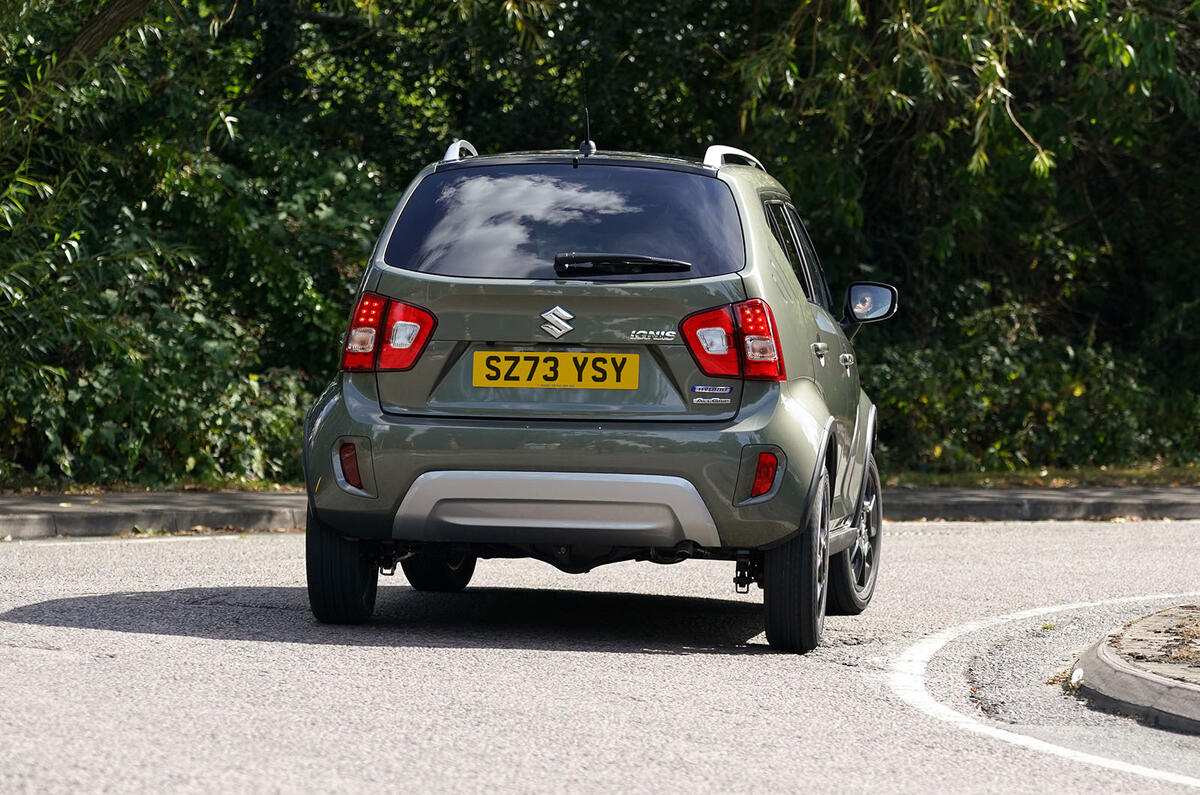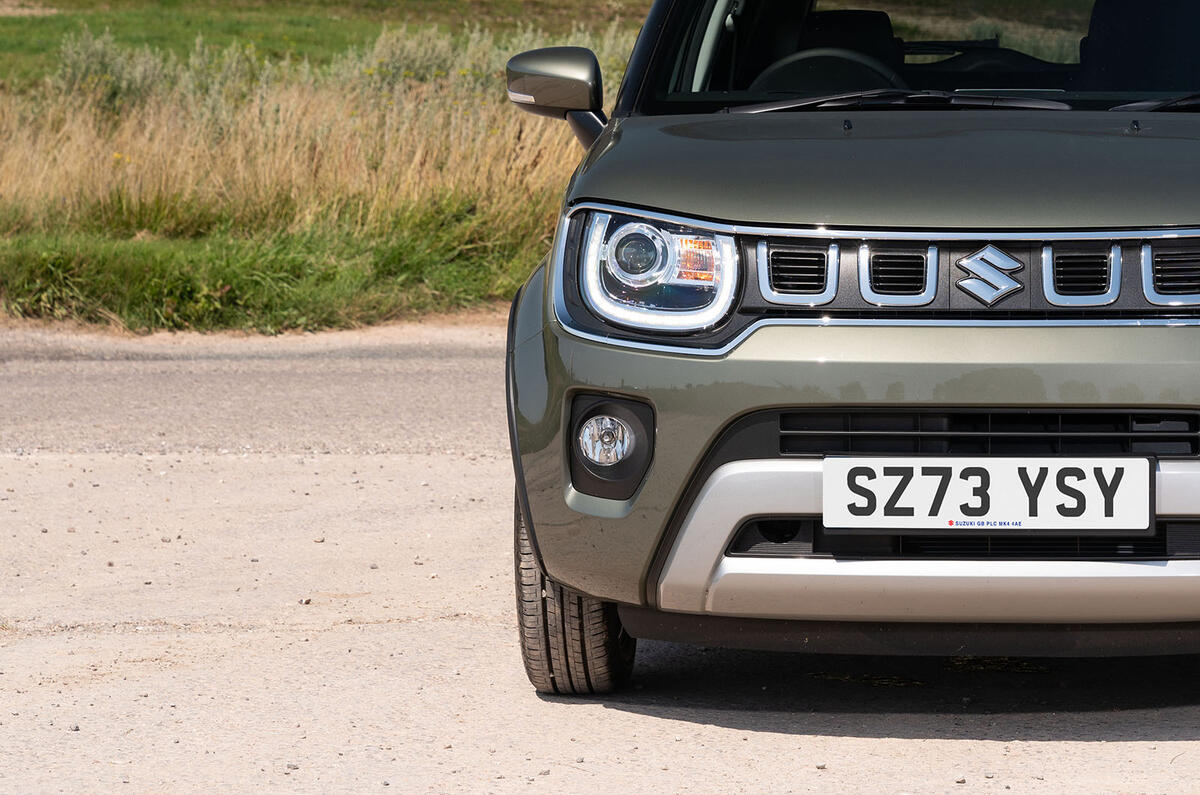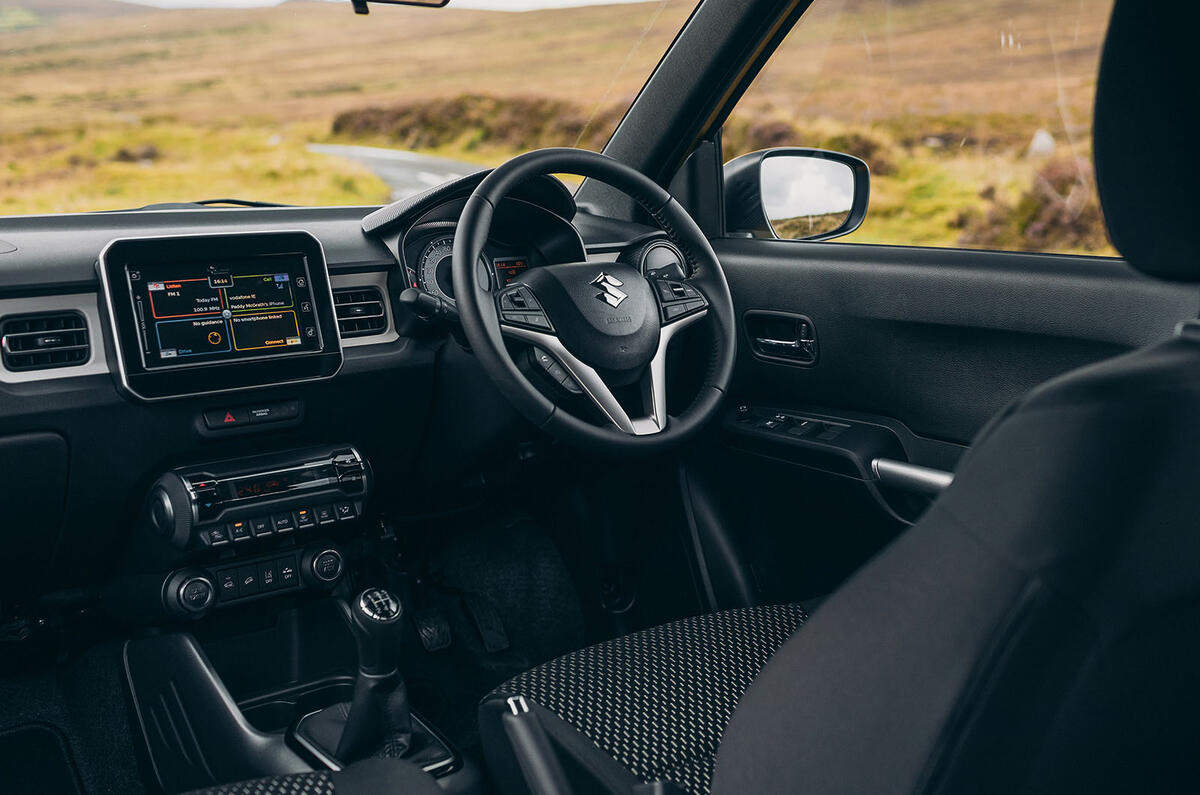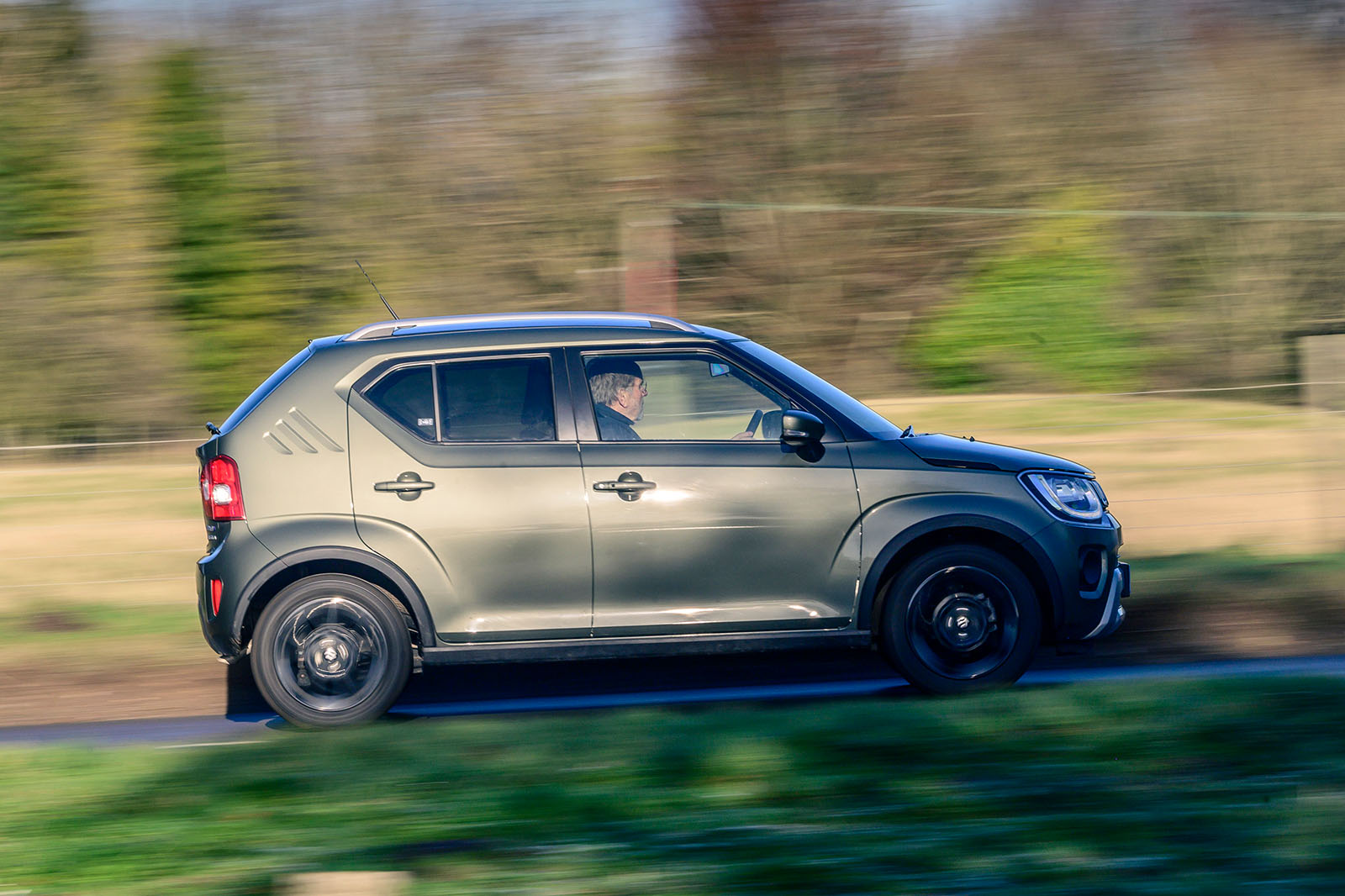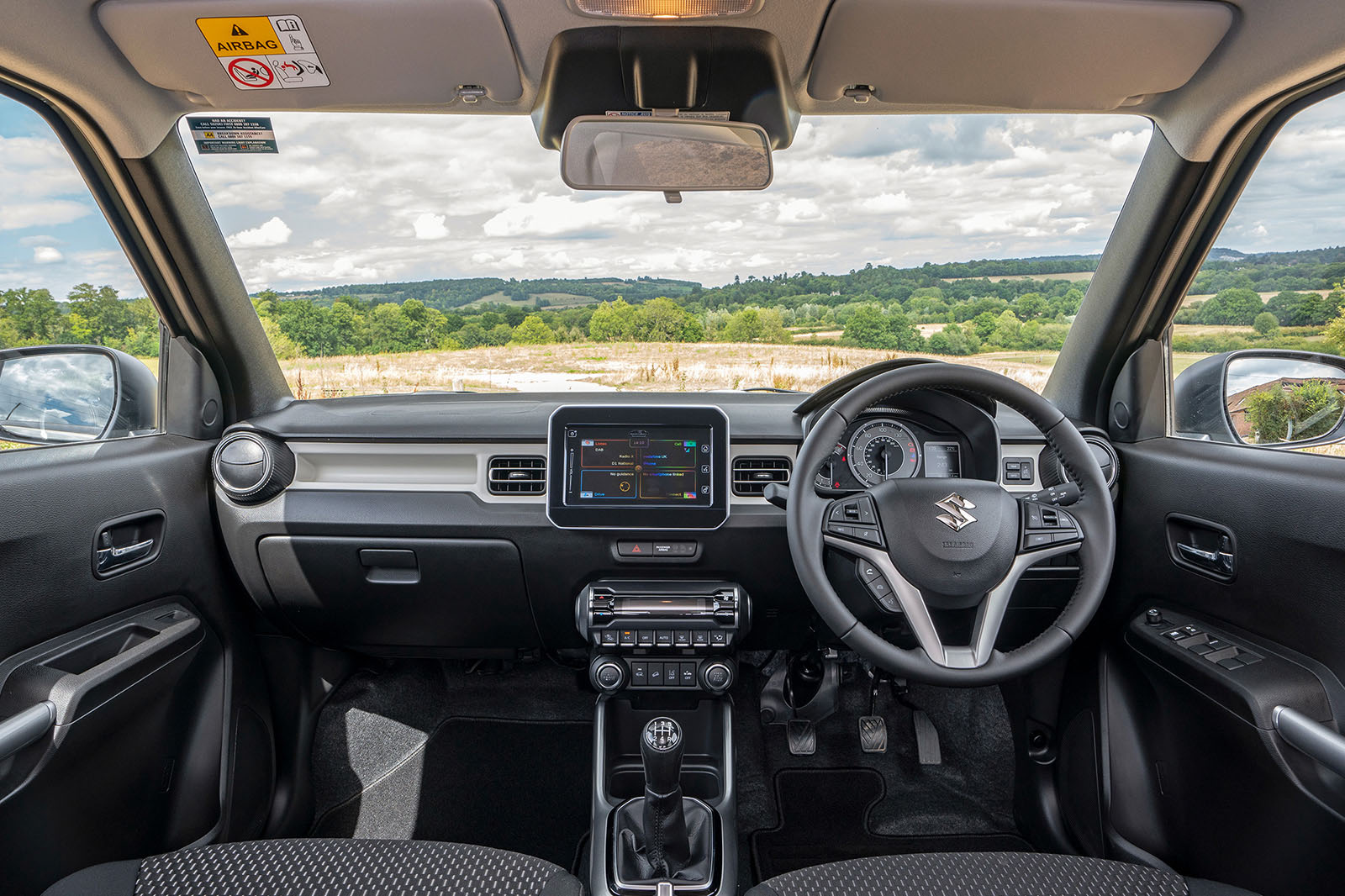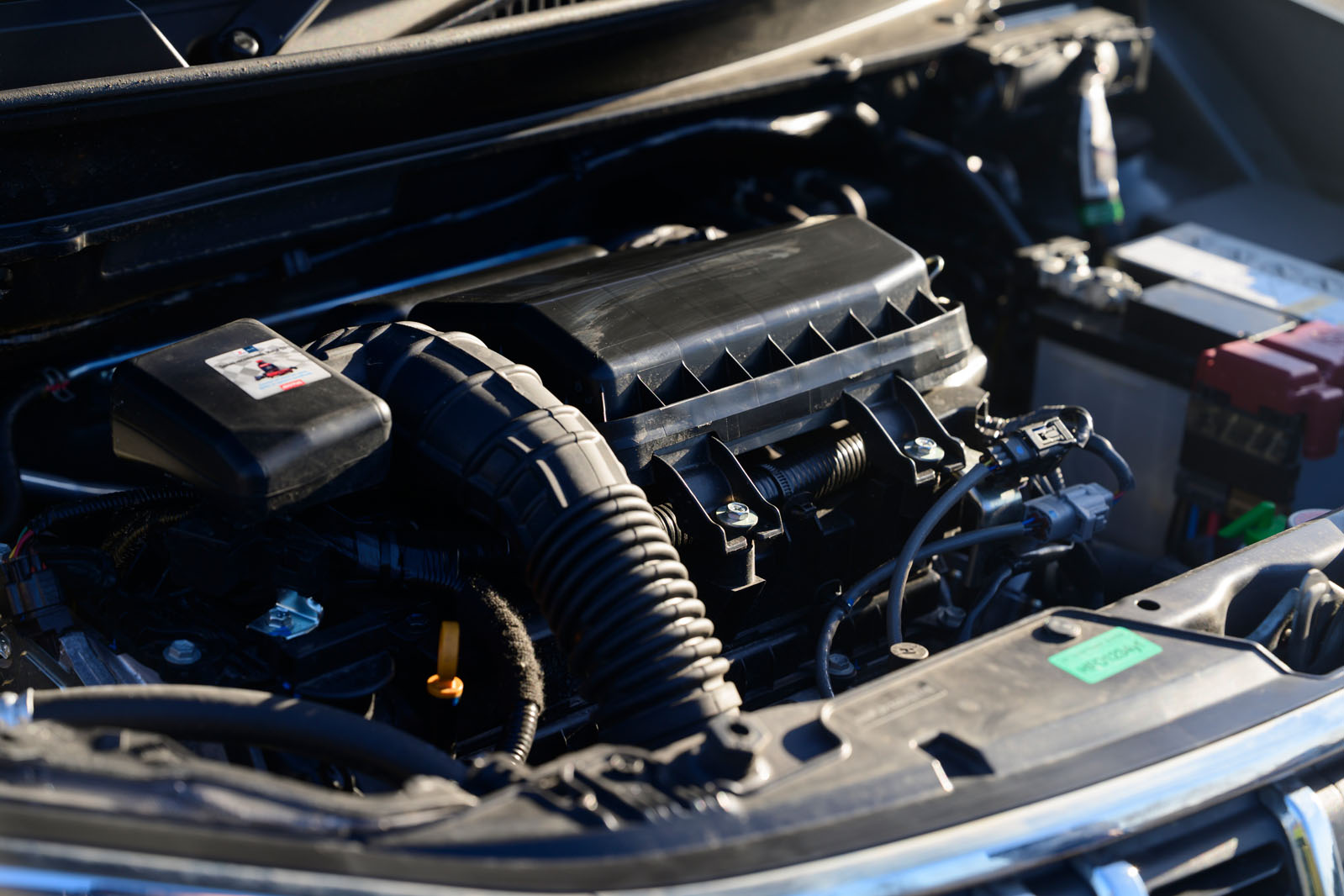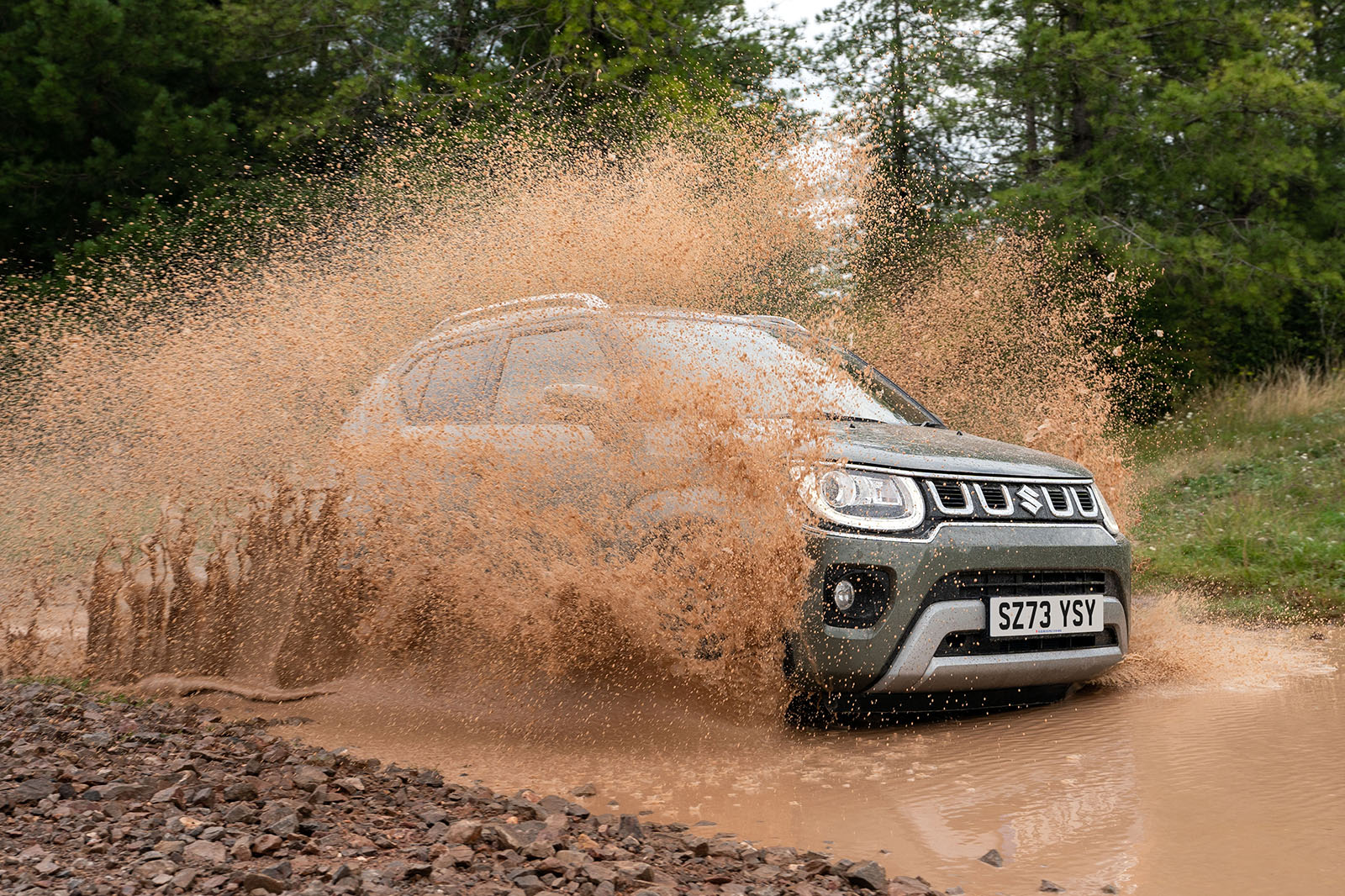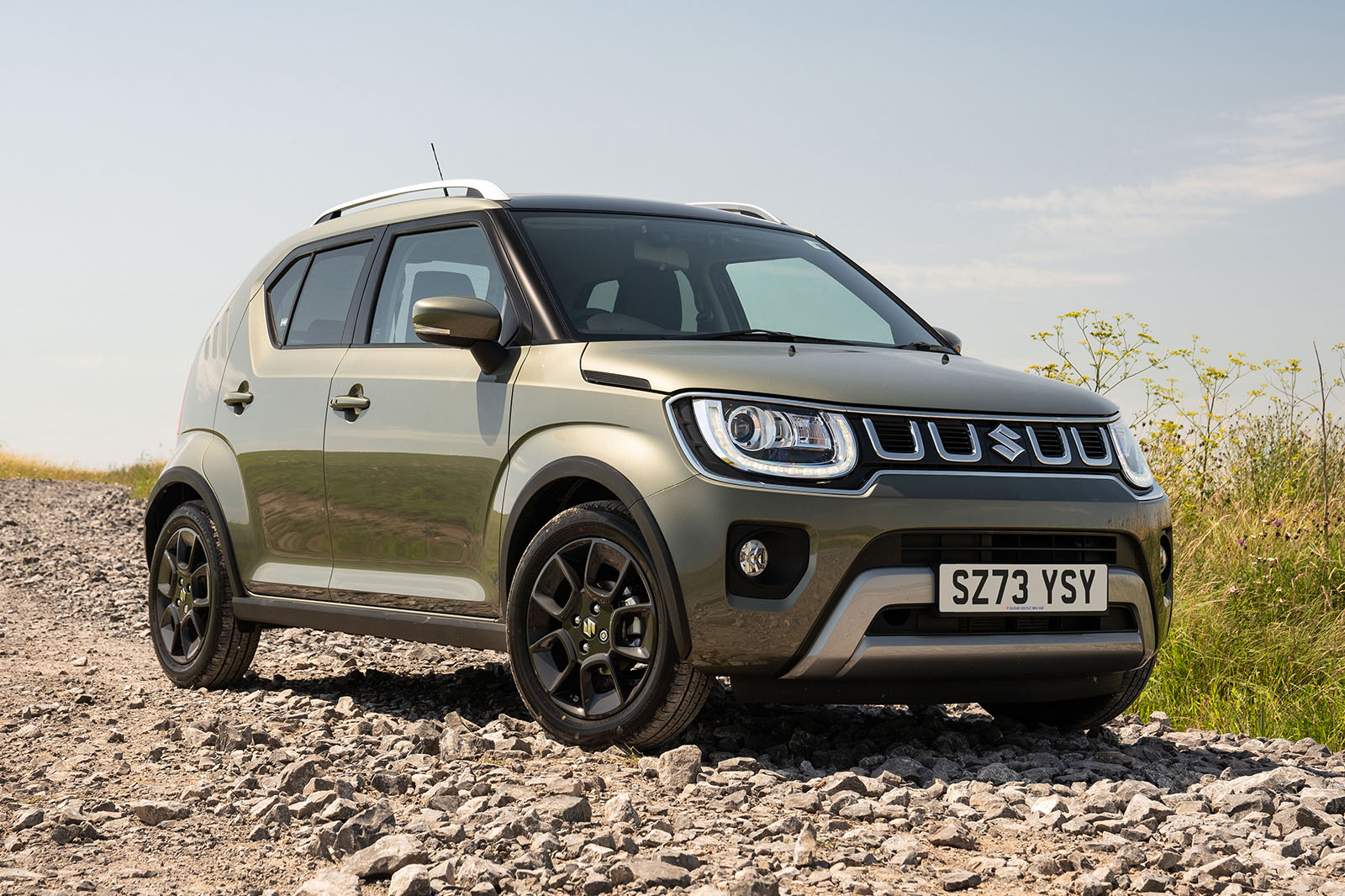Is the Suzuki Ignis a city car or a compact SUV? At just 3700mm long and 1690mm wide, it’s significantly smaller than even a typical supermini - but it offers optional four-wheel drive, reasonable ground clearance, and has the kind of bulldog stance that makes it look fit for flinging mud.
Indeed, Suzuki refers to the Ignis as “the only ultra-compact SUV on the market”, and attempted to emphasise this side of its character through the car’s last major facelift (which came along in 2020), introducing a new grille and bumpers, plus some more countryside-appropriate paint colours, which it has since added to for 2023.
Though it’s small on the outside, however, the Ignis offers very impressive interior space and versatility. So whether you need something small and affordable that’ll get you across slippery tracks and through the winter months, or just a well-packaged, spacious, efficient and clever small car for everyday urban motoring, this cheery Suzuki has a lot to offer.





